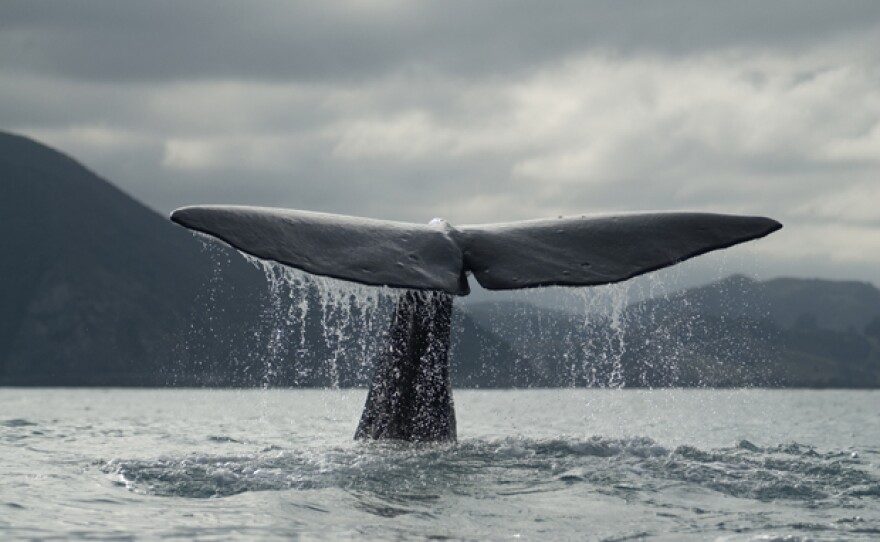Whales and dolphins remain a constant source of fascination. But how much do we really know about them? Whales and dolphins, known as cetaceans, may appear to be totally alien to us — but with their mental ability, group communication and the recent discovery that dolphins have individual names, they are closer to us than we ever imagined. This three-part series ("Giant Lives," "Deep Thinkers" and "Voices Of The Sea") provides new insights into the lives of whales and dolphins in a visually powerful, engaging and entertaining format. Two of the world’s top underwater cameramen—Doug Allan (“Planet Earth’s” polar specialist) and Didier Noirot (Cousteau’s front-line cameraman)—film breathtaking encounters. Teams of intrepid scientists equipped with the latest technology are making extraordinary breakthroughs in their understanding of these intelligent life forms — breakthroughs that may safeguard their survival.
In the Arctic, migrating narwhals, “unicorns of the sea,” echolocate to map a world of shifting ice and pinpoint vital breathing holes hundreds of feet away.
In the Amazon, pink boto dolphins find their way in waters muddied by floods, darkened by tannins and choked with branches and leaves. Using a special bulge on its forehead, a boto is able to focus its clicks and buzzes into a sound beam that allows it to navigate the dark waters while chattering away to its neighbors with a second, completely different sound system.
Noirot and Allen set out to film sperm whales, once known only by their fictional "Moby Dick" representation. They travel in families and communicate with complex “coda” clicks, which can also be put to more lethal use.
A mile below the surface, the whales use another form of clicks to hunt in the dark. These hunting clicks are the loudest sounds made by any living thing, louder than a thunder clap. Unable to follow the hunt into the depths, Noirot and Allen experience a breathtaking encounter with a baby sperm whale lost and looking for its mother.
Killer whales also hunt with sound, producing a high-pitched shriek that herds their prey into a tightly bunched school of swarming fish so panicked that the whales are easily able to move in for the kill.
Dolphins off the coast of Brazil use not their voices but the sound of their bodies to hunt cooperatively with local fishermen. Driving fish toward the shallows at the shore, the dolphin slap the water with their tails and heads to signal when to throw the waiting nets. The fish that escape the fishermen swim right back into the mouths of the waiting dolphins.
But the most famous and mysterious voice of all of the Ocean Giants belongs to male humpback whales. Every winter, these 40-ton giants gather off the coast of Hawaii to sing with voices that can travel thousands of miles across an entire ocean basin. It is a communal song sung by all the male humpbacks from Mexico to Japan, improvised together and evolving from year to year, a haunting performance that captures our imagination but remains wonderfully mysterious.
Join PBS NATURE, as it dives into the world of whales and dolphins, and reveals the secrets of their intimate lives like never before.
Episode 1, "Giant Lives," repeats at 11 p.m. on Wednesday, Jan. 13, 2016. Episode 2, "Deep Thinkers," repeats at 11 p.m. on Jan. 20, 2016.
Past episodes of NATURE are available for online viewing. NATURE is on Facebook, Tumblr and you can follow @PBSNature on Twitter.






